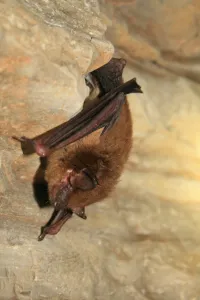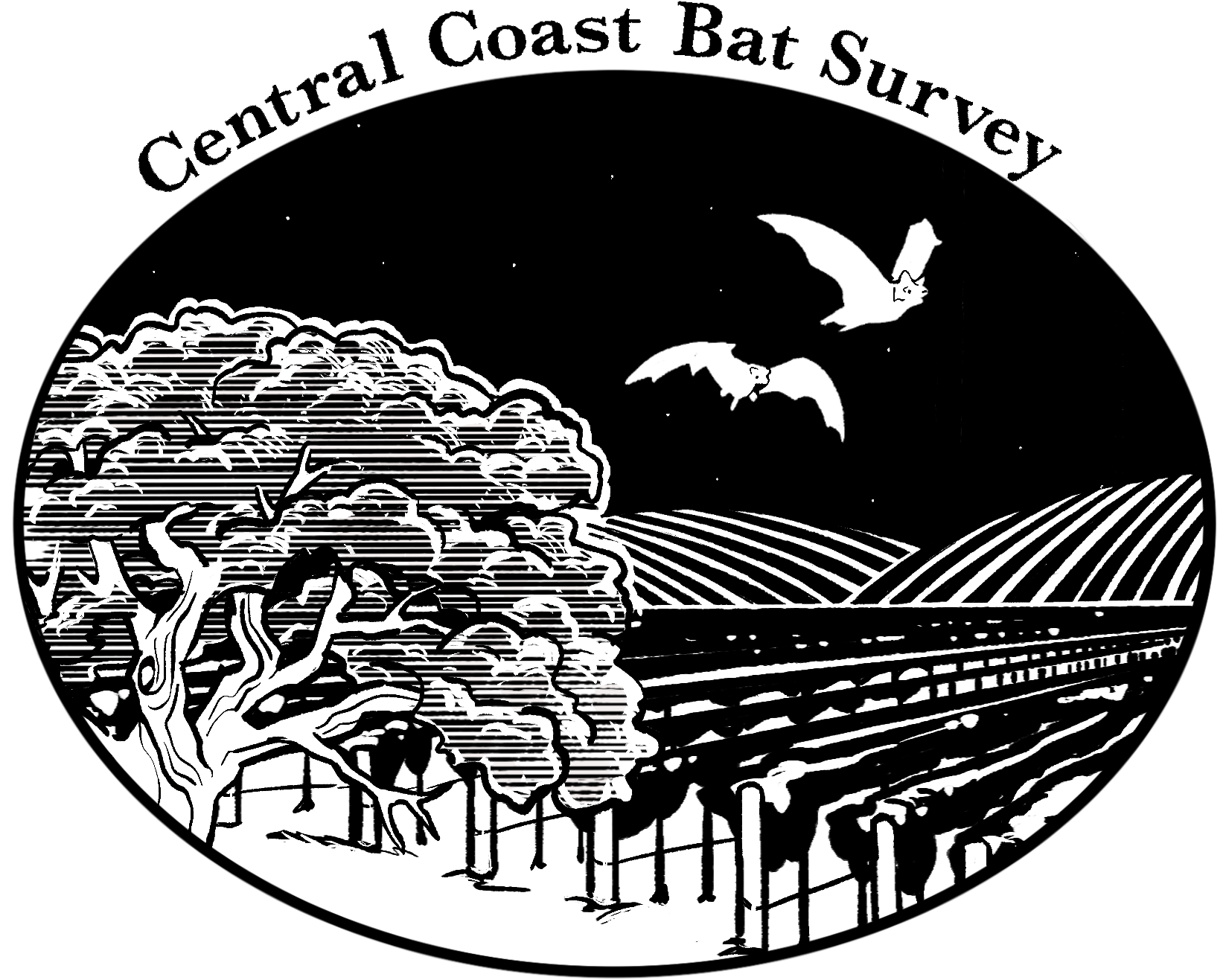Big Brown Bat (Eptesicus fuscus)

Description:
A medium-sized bat with relatively small black ears that are thick and leathery. Ears and membranes lack hair, or nearly so. The wings are short (that is, from the leading edge to the trailing edge) and broad (that is, from side to side).
Color:
A big brown bat has a back that is rich chestnut brown in color with paler underparts, which may be light brown, tan, or dirty cream-colored. Membranes are hairless and blackish (or at least appear very dark).
North American Range:
The species is found throughout North America, including parts of Canada and much of Mexico.
Roosting:
The big brown bat is a forest-dwelling species that has adapted to a cosmopolitan existence. Favored daytime roosts include the loose bark of dead trees and cavities of trees. Also typically found in caves and crevices in rocks, this species is commonly found using attics and crevices in buildings.
Characteristics:
Big brown bats prefer to forage among the crowns of the trees and in open areas rather than under the forest canopy. Their flight is relatively slow and direct.
Feeding:
These bats emerge rather early in the evening and often follow regular, somewhat predictable feeding routes. The diet consists entirely of insects, which they capture in flight. Variable by location, they feed on beetles, bees and wasps, stone flies, Mayflies, true bugs, nerve-wings, scorpion flies, and caddisflies. Oddly, despite their common co-occurrence, moths do not seem to be an important component of their diet.
Migration:
In winter, they migrate or seek hibernation quarters in caves or buildings.
Breeding:
Big brown bats mate in the fall. From one to two young are born in the period from May to August. It is possible that due to climatological differences (especially moisture), there is a difference in productivity between the eastern and western populations of the species. Adult males usually do not occupy maternity colonies until the young mature, when they may begin using maternity colonies more frequently, possibly in anticipation of the fall breeding period.
